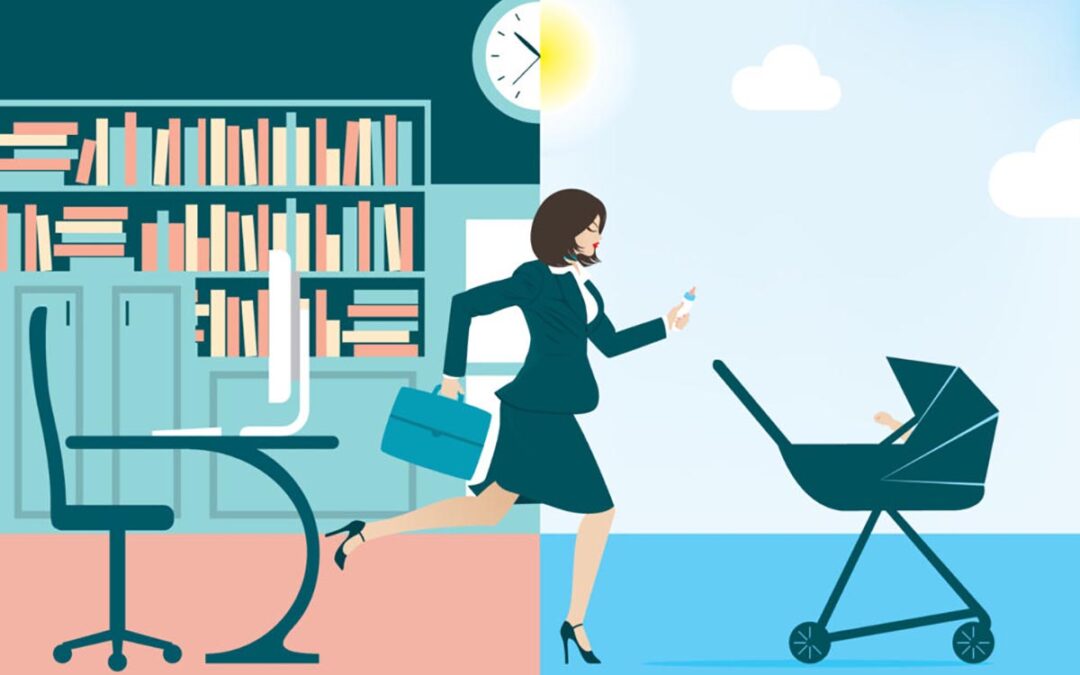Work-family balance can be understood as the compatibility of roles in an individual’s family and work domains.
According to Grzywacz & Carlson (2007), work-family balance is “the accomplishment of role-related expectations that are negotiated and shared between an individual and his or her role-related partners in work and family domains”.
The two primary dimensions of work-family balance are the direction of influence between work and family roles and the type of effect. Frone (2003) defined it as the simultaneous experience of low work-family conflict and high work-family facilitation, known as the positive and negative spillover approach. Therefore, work-family conflict and work-family facilitation are the two components of work-family balance. Low levels of inter-role conflict and high levels of inter-role facilitation represents work-family balance.
Work-family conflict or negative work-family spillover is a form of inter-role conflict in which an individual’s work and family domains are mutually incompatible in some respect. There is a bidirectional relationship between the two domains (Greenhaus & Beutell, 1985). Empirical research identifies the various factors of work-family conflict, categorised into role, environment and personality traits. The various role-related sub-factors includes behavioural involvement referring to the devotion of time to specified roles, psychological involvement of the person to the given role, role-related stressors increasing one’s cognitive preoccupation and the role-related resources especially social support in both fronts majorly contributes to an individual’s experience of work-family conflict disturbing its balance.
Work-family facilitation or positive work-family spillover refers to the extent to which an individual’s engagement in one social system contributes to growth in another social system. This also indicates a bidirectional relationship. Wayne et al. (2007), identified the factors that enable work-to-family facilitation and categorised them into – personal characteristics and environmental resources. The first category includes positive affectivity and self-efficacy, whereas the latter category includes energy sources, developmental opportunities, supportive work environment and condition resources like job prestige.
The imbalance between social roles may be an enormous stressor that can influence outcomes in several life domains and affect the physical and mental well-being of the individuals involved. The negative consequences of the lack of work-family balance include alcohol abuse, decreased job and life satisfaction, fatigue, exhaustion, increased chances of depression and physical illness (Beutell & Wittig-Berman, 1999; Boyar et al., 2003). It also leads to more absenteeism, leaving work early and tardiness, disruption to staffing, and financial loss (Iverson & Deery, 2001).
Promotion of work-family balance can be done at dual fronts. At the individual level, certain measures can be undertaken such as developing appropriate social support, reorganising the time devoted demands, reducing the psychological importance of roles, finding ways to reduce distress and finding better ways to cope with stressors, for both work and home domains. These can help to maintain a healthy balance between their work and family roles. Hall (1972) delineated three types of coping behaviour that can help reduce work-family conflict, these are structural role redefinition meaning altering externally imposed expectations; personal role redefinition referring to changing one’s internal conception of role demands and reactive role behaviour by efficient planning. At the organisational level, work-family balance can be promoted by initiatives such as flextime, compressed work-week and on-site childcare.
The initiative taken for maintaining work-family balance offers a win-win situation to both employees and employers and affects business progress and performance. Therefore, work-family balance is an important and increasingly hot topic because it’s about improving people’s quality of life and aims to widen access to career opportunities.
– Urveez Kakalia and Annesha Datta.

